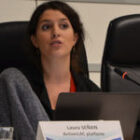The role of foundations in the implementation of the World Urban Forum’s New Urban Agenda
When it comes to urban development, there is a clear proponent in the ranks: Latin America, which continues to be the most urbanised region in the world. Although this is a unique opportunity for sustainable development, it is at the same time a massive challenge, especially taking into account the huge inequality problem across the region.
Fundación Avina, whose programmes have, for more than 20 years, positively impacted sustainable development in Latin America, a region where more than two thirds of the population live in cities, focuses in supporting collaborative processes that can improve life in cities. And for this reason we participated in the World Urban Forum 9 (WUF9) in Kuala Lumpur in February 2018.
This is not entirely new. Indeed, Fundación Avina’s participation in the WUF9 builds on our previous experience in Habitat III. During Habitat III in Quito in 2016, Fundación Avina did not only work on home territory but the world was also at the phase of declaration of intent, which led to the adoption of the New Urban Agenda (NUA). Two years later, it is time to review the progress made on the NUA. WUF9, hosted by the Government of Malaysia in Kuala Lumpur, was a challenge in terms of planning and getting ready to make the most of our participation. The WUF9 was particularly challenging in terms of our critical reflection on how we manage the intentions of the New Urban Agenda.
As well as co-organising, together with UN Habitat and Lima Cómo Vamos, the side event “Ocupa tu Calle” where Avina presented the joint work done within the “Public Spaces” agenda, Fundación Avina participated in almost all the WUF’s philanthropy related sessions. Luis Miguel Artieda, Programme Manager of Fundación Avina, took part in the panel “The role of philanthropy in the implementation of the NUA” organised by Ford Foundation.
In partnership with the European Foundation Centre, Fundación Avina also participated in the Stakeholders Roundtable, contributing to the WUF9 official report, and in a fruitful networking event on the last day Fernando Rueda, Avina’s Director of Strategic Partnerships had a meaningful debate with representatives from Realdania, Ford Foundation, WorldEnabled and HealthBridge on how the philanthropic sector is contributing to the implementation of the NUA.
WUF9 was also a key opportunity for Avina to participate in the UN Habitat’s General Assembly of Partners (GAP), where we co-chair with the EFC, the Partner Constituent Group on Foundations and Philanthropy. This assembly of 16 different stakeholder groups and 1,300 member partners worked towards understanding where the synergies lie between different stakeholders and how we can work more effectively together in the NUA implementation. The GAP also made a historical move by becoming the first global stakeholder and partnership platform recognised by the UN to include a stakeholder group on Sexual Orientation and Gender Identity.
Therefore, the opportunity to reflect upon the implementation of the NUA was unique. What is philanthropy doing in this sense? How should we project ourselves? Foundations are already implementing the NUA. Indeed, as well as in other areas, what most foundations are doing is maximising their added value by seeking innovative opportunities and solutions and taking risks by provoking transformative systems change. In the end, foundations are catalytic change makers, and the implementation of the NUA is no exception.
To be really successful, the NUA needs transversal collaboration of all the stakeholders, from development banks to grassroots organisations, actors that don’t always dialogue with each other. Foundations have the ability to enable these discussions, balancing the power among those that have unequal access to resources.
Alignment with the NUA is key to prioritise the strategic entry points given the limited resources. The rule should be the scalability potential and maximizing the impact.
As we look to the future, all eyes are on the implementation and monitoring of the NUA. As foundations, we maintain that our key role will be using our natural ability to be risk-takers to pilot solutions that can be scaled-up. We must also use our convening power to ensure a broad monitoring strategy. Through the GAP, we will engage in a collaboration relationship with UN Habitat representatives in charge of monitoring the advancement of the regional implementation plans of the NUA. This platform will also be used to share best practices. WUF10, to be held in Abu Dhabi, United Arab Emirates in 2020, will be the next key moment to take stock of how our efforts are making impact.
Authors

Coordinator of Strategic Alliances, Fundación Avina